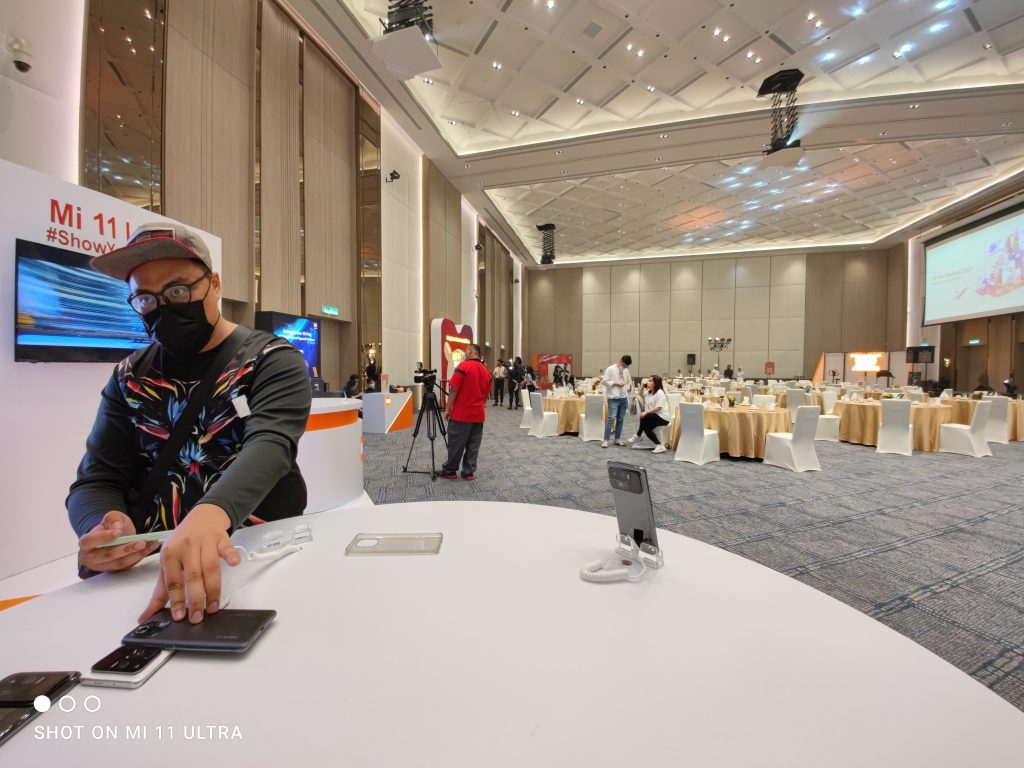Xiaomi made a name for itself with its affordable smartphones that offer incredibly good value for money, but in recent times, the Chinese company is steadily moving up the price range. Its latest flagship smartphone, the Xiaomi Mi 11 Ultra, exemplifies this the best. After all, it carries a hefty RM4,299 price tag for the Malaysian market.
However, at that price point, the Mi 11 Ultra really is a proper flagship smartphone through and through with a very promising camera system – complete with an AMOLED screen. I had a brief hands-on with the device, and I’m quite certain that it can hold a candle to other high-end smartphones at the same price point.
The only thing is: are Xiaomi’s previous shortcomings still present on the Mi 11 Ultra? Let’s find out.
Since the Mi 11 Ultra’s camera system is one of its most exciting features, let’s start with that first. The primary sensor of its triple camera system is a 50MP f/1.95 lens with a large 1/1.12-inch sensor, which (in theory) offers markedly better performance than other sensors in the market now, especially in low light conditions.
Apart from that, the Mi 11 Ultra also has a 48MP f/2.2 ultra-wide angle shooter and a 48MP f/4.1 telephoto lens with 5x optical zoom. I tested out the zooming performance of the camera for a bit, and I’m…actually quite impressed. Judge for yourself with the sample shots below:

48MP ultra-wide angle 
50MP primary 
50MP primary (2x zoom) 
48MP telephoto (5x zoom) 
48MP telephoto (10x zoom) 
48MP telephoto (120x zoom) 
That’s right, the Mi 11 Ultra’s camera system can do up to 120x digital zoom, and the detail preservation at this level of zoom still looks pretty good. Granted, this was taken under ideal lighting, so it’ll be interesting to see if the camera can still return this kind of shot in low light conditions. Overall, this triple camera system looks very promising, and I can’t wait to put it through its paces in more challenging lighting situations.
Oh, there’s also a small 1.1-inch 294 x 126 AMOLED panel right beside the three camera sensors of the Mi 11 Ultra. It can serve as a viewfinder for selfie shots – there’s still a 20MP f/2.2 selfie camera on the front of the phone – an always on display, and it can even display incoming notifications. Personally, I think this is a gimmicky feature, though I do have to actually use the phone first for a more conclusive opinion.
But I can say this with certainty: I am absolutely not a fan of the huge camera bump. Not only does it protrude out of the phone in a very jarring manner, the large size of the camera module itself further draw attention to the bump.
Anyway, at least the Mi 11 Ultra still looks and feels very premium. It has solid build quality (thanks to its IP68-rated chassis and ceramic back) as well as a vibrant 6.81-inch 1440p AMOLED dual curved screen with a fast 120Hz refresh rate. Since it’s an AMOLED panel, it offers punchy colours and wide viewing angles. Basically, it’s a high quality screen.
In the performance department, the Mi 11 Ultra will not disappoint. It’s powered by the latest Qualcomm Snapdragon 888 chipset paired with 12GB of RAM and 256GB of internal storage, and in my brief time with the phone, it definitely feels fast and zippy. Just like how a flagship-class smartphone should be.
The performance of the Mi 11 Ultra is not the only thing that’s fast; its charging speed is very impressive as well. Not only does it have a generous 5,000mAh battery, the Mi 11 Ultra also supports blazing fast 67W wired and wireless charging. According to Xiaomi, this allows the phone to be fully charged in only 36 minutes “with virtually no time discrepancy between wired and wireless” charging.
Overall, the Mi 11 Ultra is a solid, high-end flagship smartphone through and through. But the thing is, Xiaomi smartphones all share one major issue: subpar software experience. Granted, I didn’t notice any big issue with the Mi 11 Ultra’s software in my short time with it, but that could change once I use the device as my daily driver.
Software issues – especially when it comes to notifications – can only be truly detected in actual everyday use. I’ve reviewed a fair number of Xiaomi smartphones in the past, and I really don’t have a good impression of their software experiences. Hopefully, things could be different with the Mi 11 Ultra.
Nonetheless, I still think the Xiaomi Mi 11 Ultra can justify its RM4,299 price tag. In a vacuum (even more so for a Xiaomi phone), this price tag may look steep, but that’s really the going rate for a proper flagship smartphone in today’s market. The Samsung Galaxy S21 Ultra, for example, has a much higher starting price of RM4,999.
But, again, is the Mi 11 Ultra comparable to other high-end flagship smartphones like the S21 Ultra? Well, I do need to use the phone more extensively to give a fair assessment, but I am impressed with the camera performance and the overall user experience of the Mi 11 Ultra so far. Yes, it is expensive, but it could (very possibly) be well worth it.











Apple Developer Academy Now in Bali, Indonesia – Fourth Academy in the Country
Acer Swift Go 14 With Intel Core Ultra Chips Now in Malaysia From RM3,899
smart Damansara 3S Centre Now Open in Mutiara Damansara, Petaling Jaya
Genshin Impact Releases 7-Minute Animated Short for Arlecchino – Playable in Version 4.6